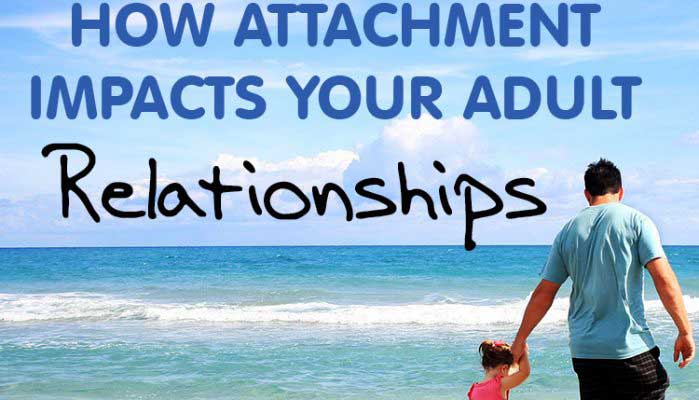In this talk, I attempt to distinguish attachment vs. relatedness (mature erotic love or adult relationships). Essentially, attachment is parent-child bonding, i.e., as children we learn to adapt to our caregiver so that we can get what we want as we are entirely dependent upon them. However, as adults, romantic love should not be attachment, i.e., we see our partner as a parental surrogate who we just try to appease so we get our needs met.
Rather, relatedness in mature erotic romantic love is the idea of a boundary, i.e., one partner does not have to be exactly who the other wants … in fact, if one partner doesn’t necessarily try so hard to appease the other, erotic connection actually builds, respect occurs, boundaries are clearer, and the relationship is essentially healthier, emotionally intimate, and erotically charged. What really negatively impacts many couples is that they fall into attachment patterns rather than cultivate relationship dynamics of relatedness/erotic love.
ATTACHMENT
- The child has a basic need to survive
- Survival depends on the getting from the mother
- This creates a very early scenario of the child “attaching” to the mother, i.e., becoming reliant and dependent on the mother.
- Attachment consists of three components: Accommodation, Suppression, and Hypervigilance
 The nature of the bond between mother and child evolves into a dance in which accommodation, suppression, and hypervigilance are negotiated.
The nature of the bond between mother and child evolves into a dance in which accommodation, suppression, and hypervigilance are negotiated.
The dance is repeated again and again, and becomes rigidified in the child’s personality. An attachment style forms and becomes the foundation of personality. There are many different types of attachment styles, but research indicates these styles remain relatively stable across the lifespan.
There are two basic trends in attachment styles; these trends are core assumptions about interpersonal relatedness.
1. One trend is that it is safe for one’s self to be experienced and expressed, even in the face of the other’s disappointment or disapproval.
2. The other trend is that the above is NOT safe, and that one’s feelings and desires are dangerous and damaging – given this, they must be concealed and a fake self must be generated.
To the extent that (B) occurs, the child’s “going on being” has been interrupted. The child has been emotionally manipulated and INDUCED to feel and behave in a restricted way so as to appease the other.
Whatever is restricted in one’s identity does not “die” psychologically, but remains sequestered in the mind through a process known as dissociation.
PSYCHIC DISSOCIATION
- Self-identity becomes split into “Me” and “Not-Me” parts, and this split is organized by the third year of life.
- The “Not-Me” part is not really NOT ME, but is actually the ME that cannot be ME in the world.
- The “Me” part is, paradoxically, fake or false, but is given priority because it is necessary for the formation and maintenance of relationships.
It can be argued that adult life revolves around one major psychological achievement: Can the “Not-Me” be identified and, once identified, can it overcome what is assumed to be “Me” — thus allowing one’s self-identity to be re-organized and more authentic?
As you might imagine, this is not the goal for many people …. the reason why is that Me vs. Not-Me corrections and realignments are too painful and challenging.
What I mean by this is that many of us unconsciously choose to remain in an ATTACHMENT LIFESTYLE. An attachment lifestyle simply means that we continue with our attachment style (formed in early life) and impose it on all situations in our lives.
RELATEDNESS & ATTACHMENT ARE DIFFERENT
I view relatedness to be the most significant psychological achievement of adult life ….it basically involves the capacity to give up one’s attachment style (accommodation, suppression, and hypervigilance) — allowing for the sequestered parts of one’s identity (the Not-Me) to be reclaimed!
Components of Relatedness:
If you are attachment-dominant, this will be quickly recognized by others (directly or via your aura) and you will be used by them, for their own advantage, at the expense of your own needs.
If you are highly related, this will also be recognized and you will be less prone to being manipulated – YET, ALSO, who you really are will be encouraged/expected.
Some believe that human relations primarily consist of “false selves” clicking into situations that allow them to remain false. This tendency (to click into place) is often seen in the therapeutic situation …. the patient vies for attachment as the therapist attempts to socialize the patient into relatedness.
Romantic relationships involve the same tension …. Person A seeks out a Person B to attach to, with a well-honed attachment style ready to use. Person B obliges. In so doing, Person B perpetuates the lost parts of Person A’s true identity remaining hidden and inactivated.
You could blame Person B, but if you think about it Person A is perhaps more to blame – Person A has “used” (induced/manipulated) Person B to help Person A remain UNKNOWN. It takes an extraordinary Person B to not allow this to happen, thus coaxing the lost parts of Person A into existence.

Relatedness (instead of Attachment) inspires separation, boundary, erotic tension, and intimacy.



0 Comments